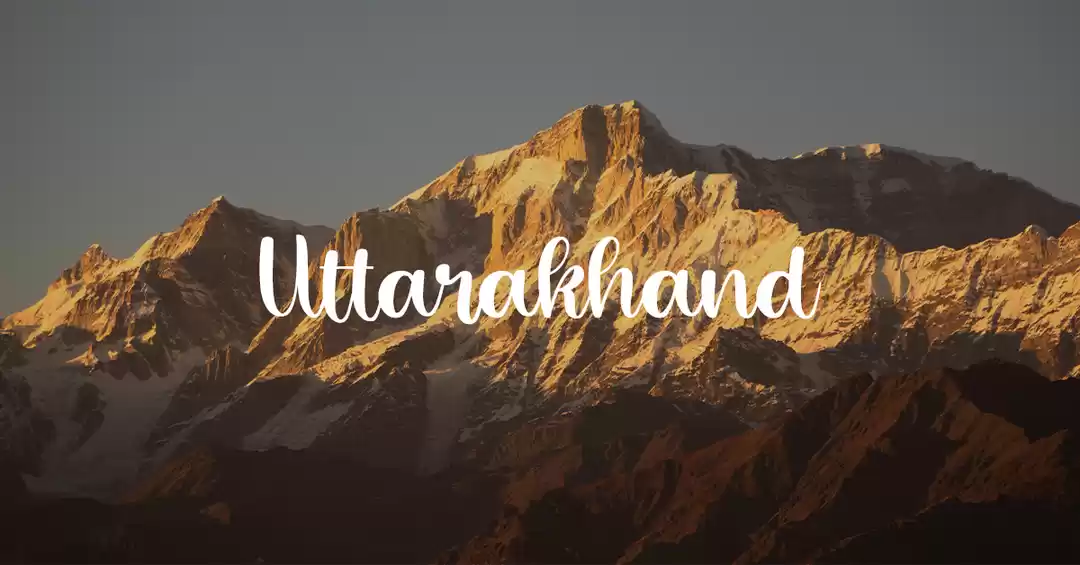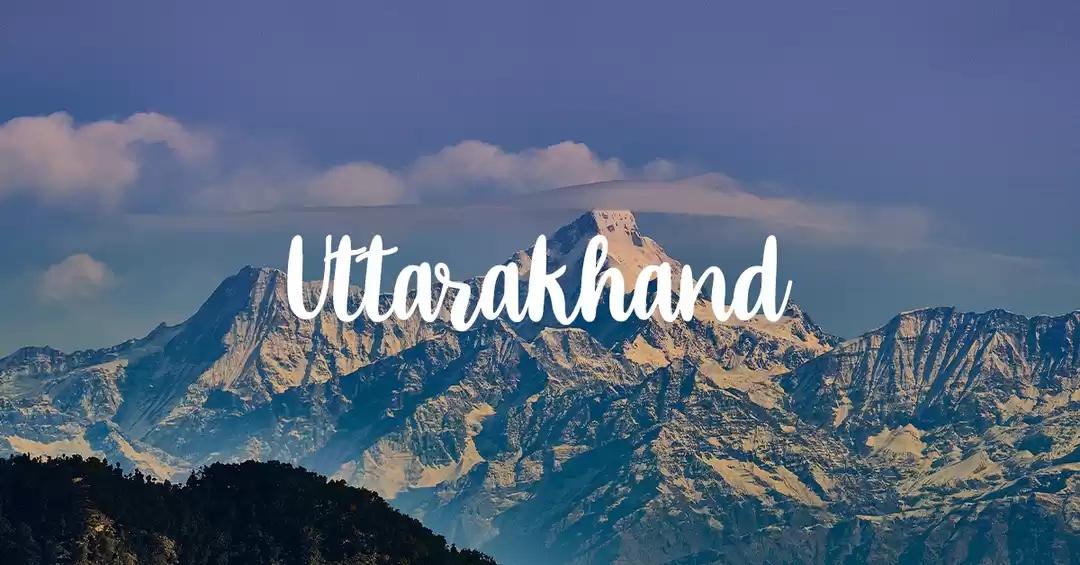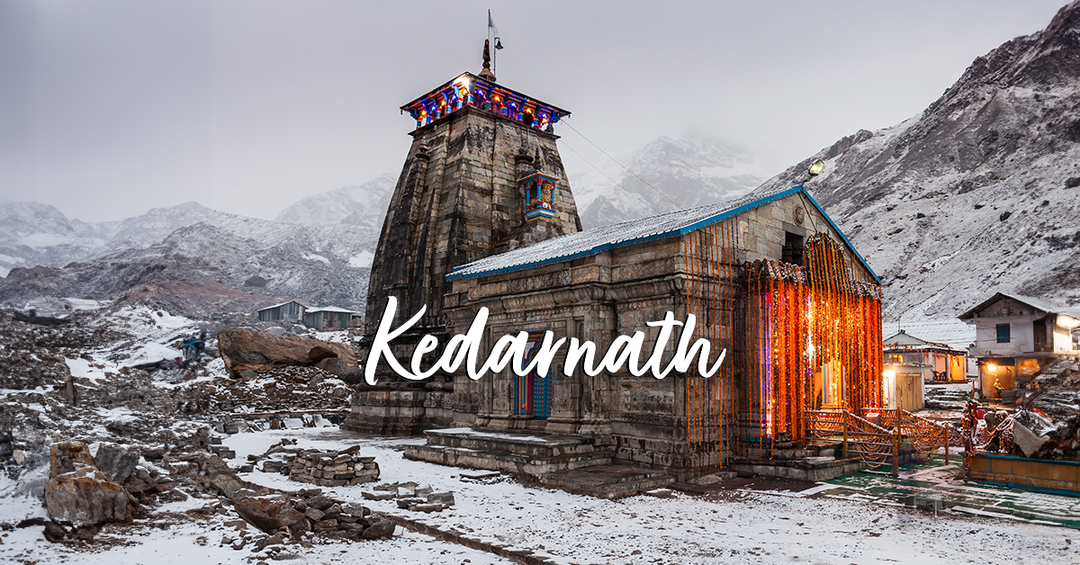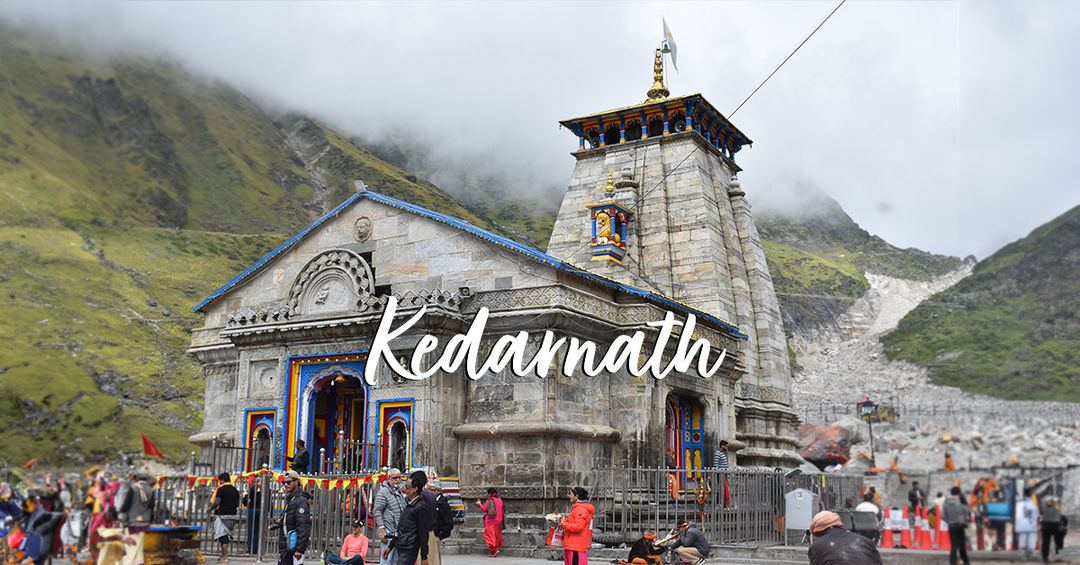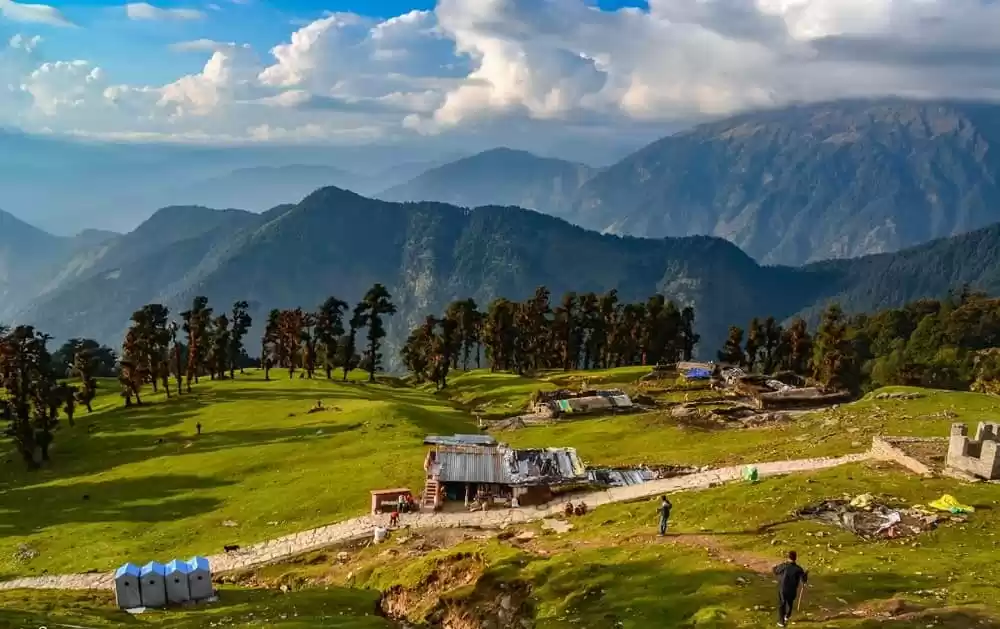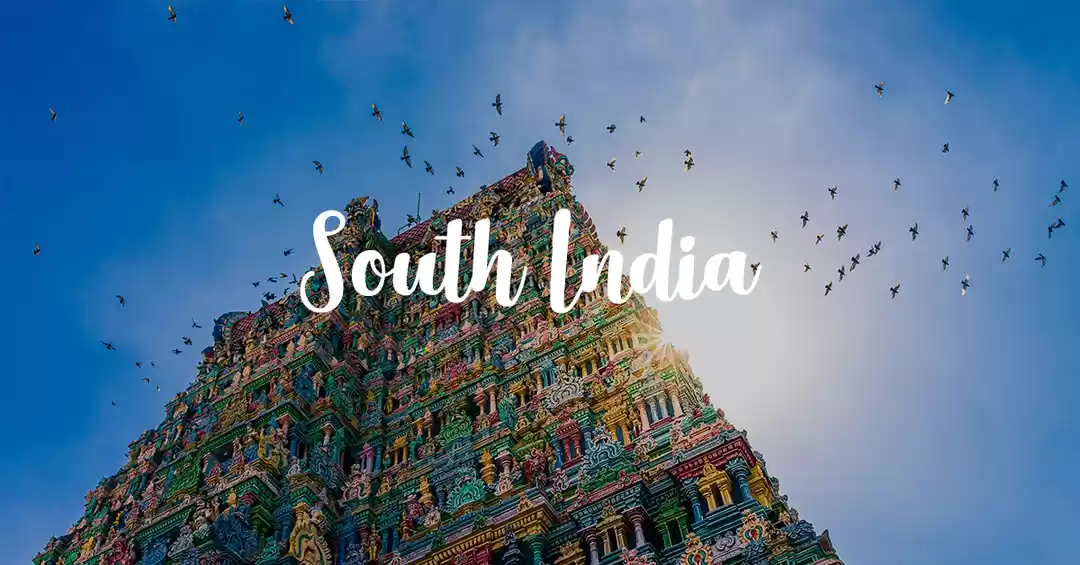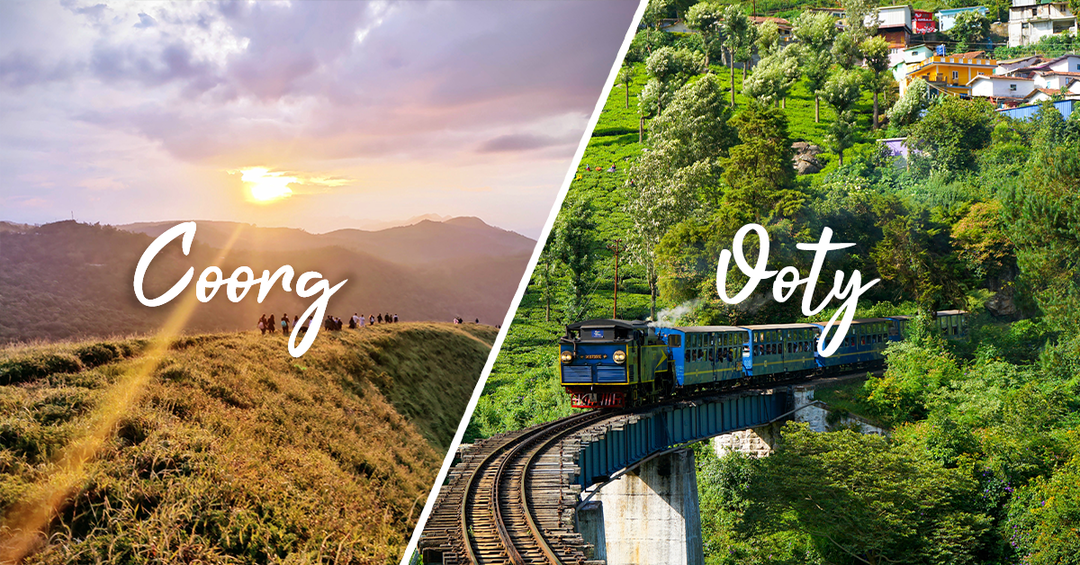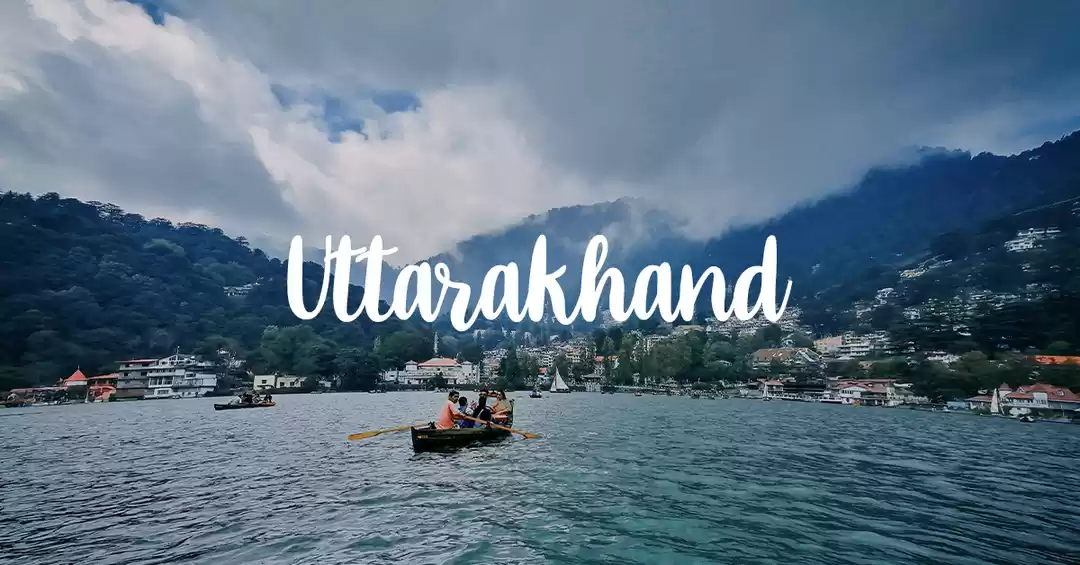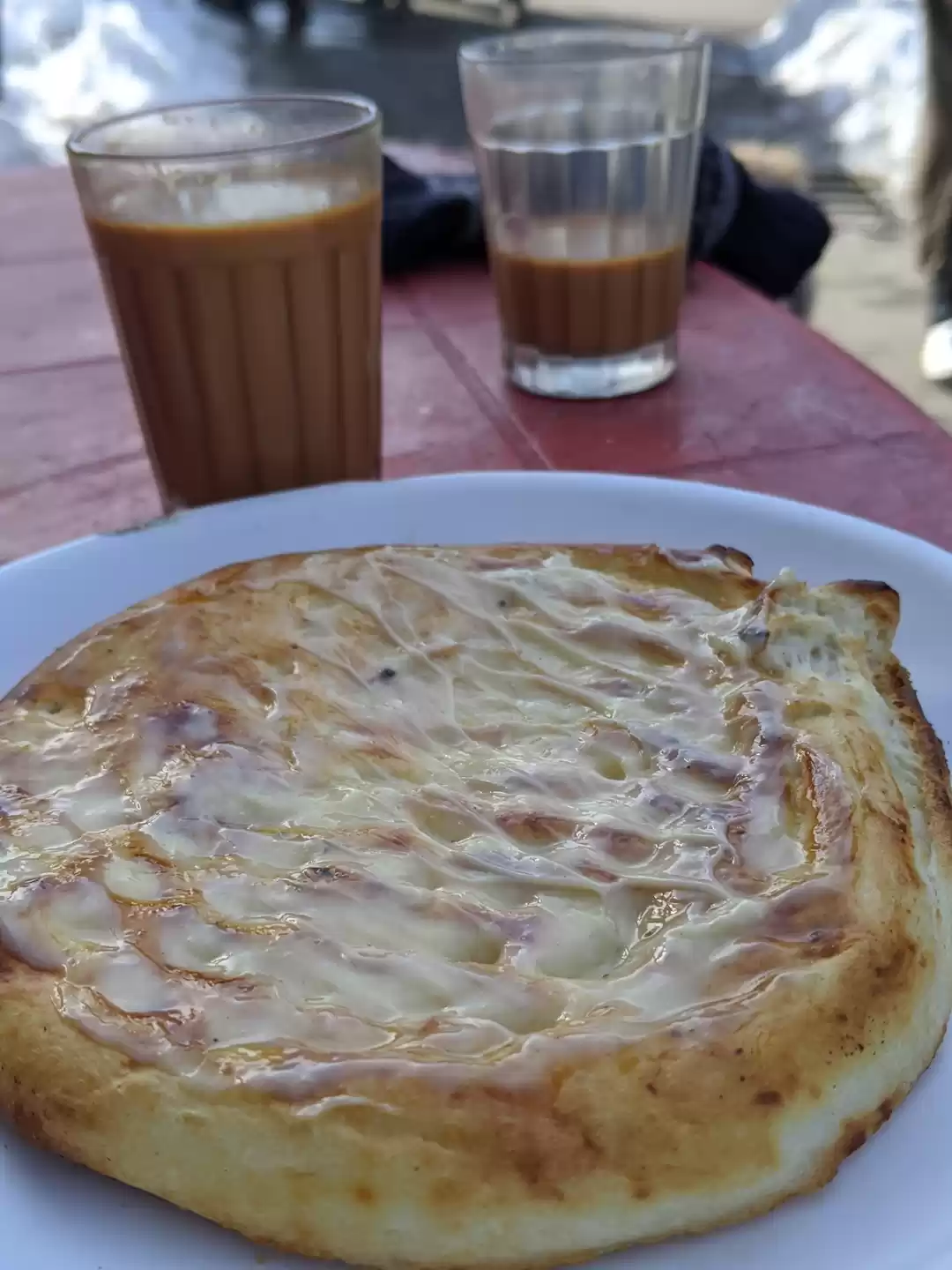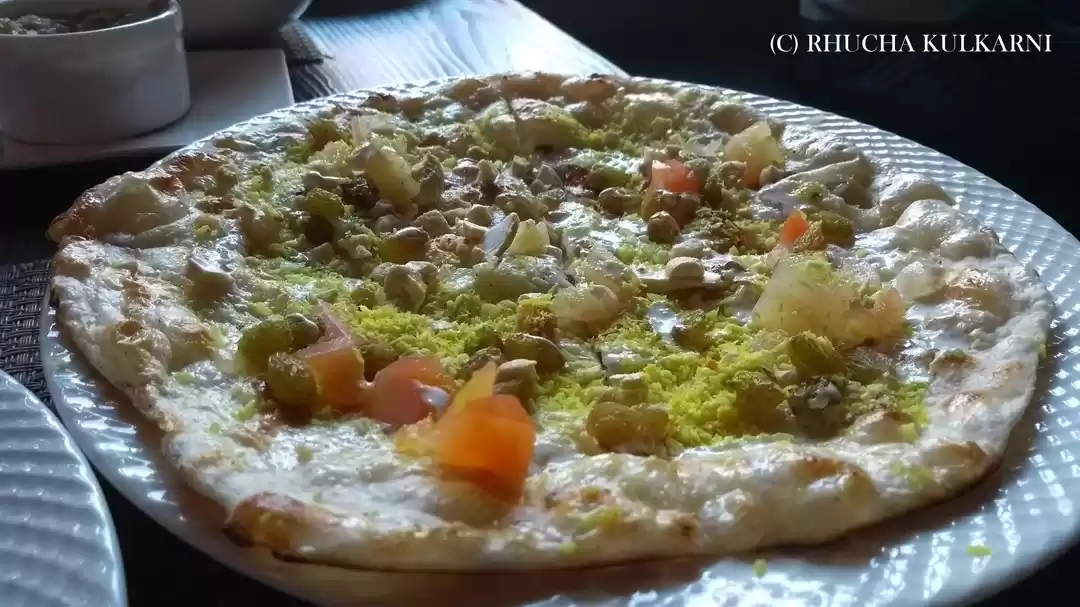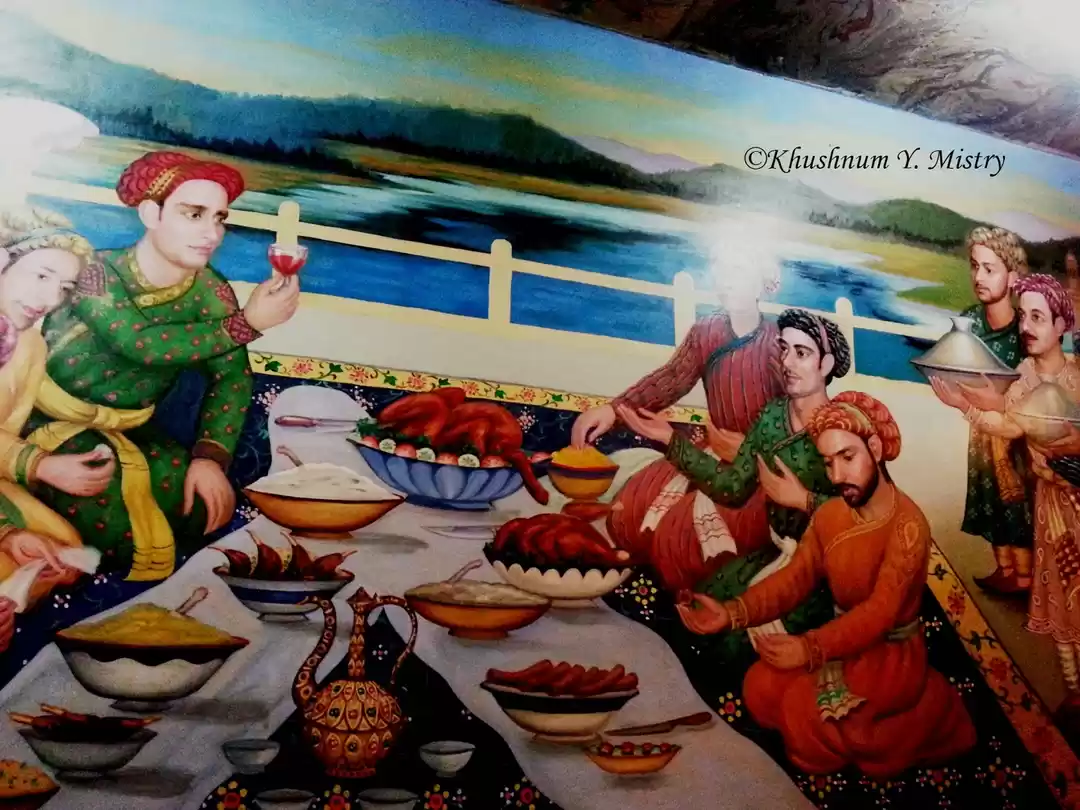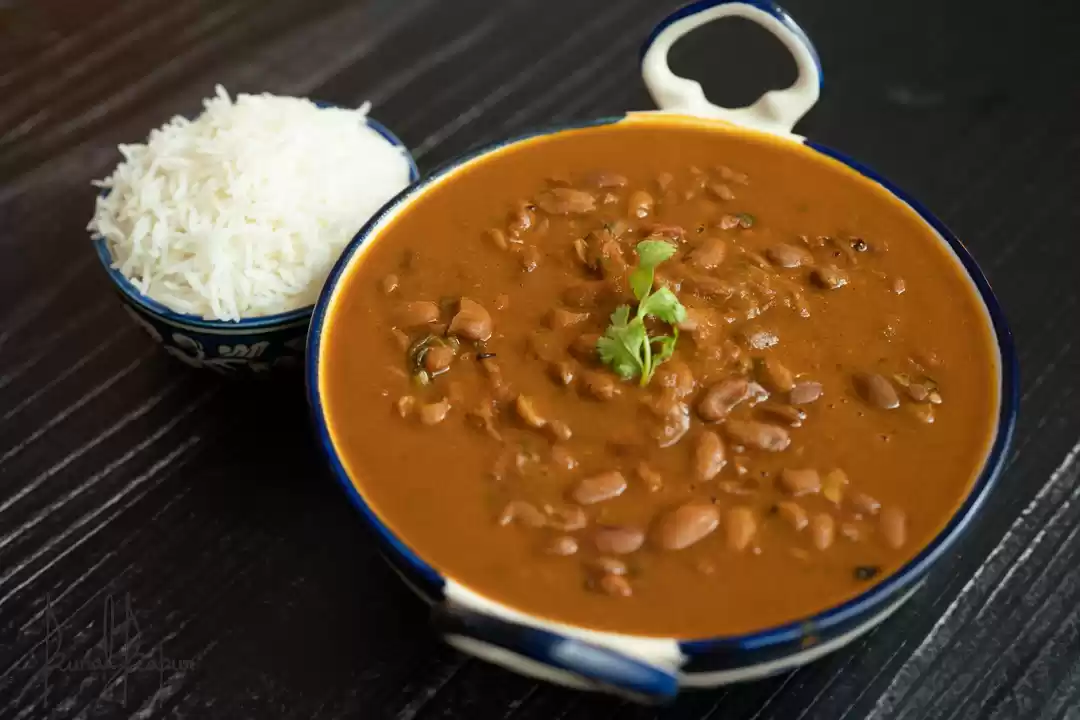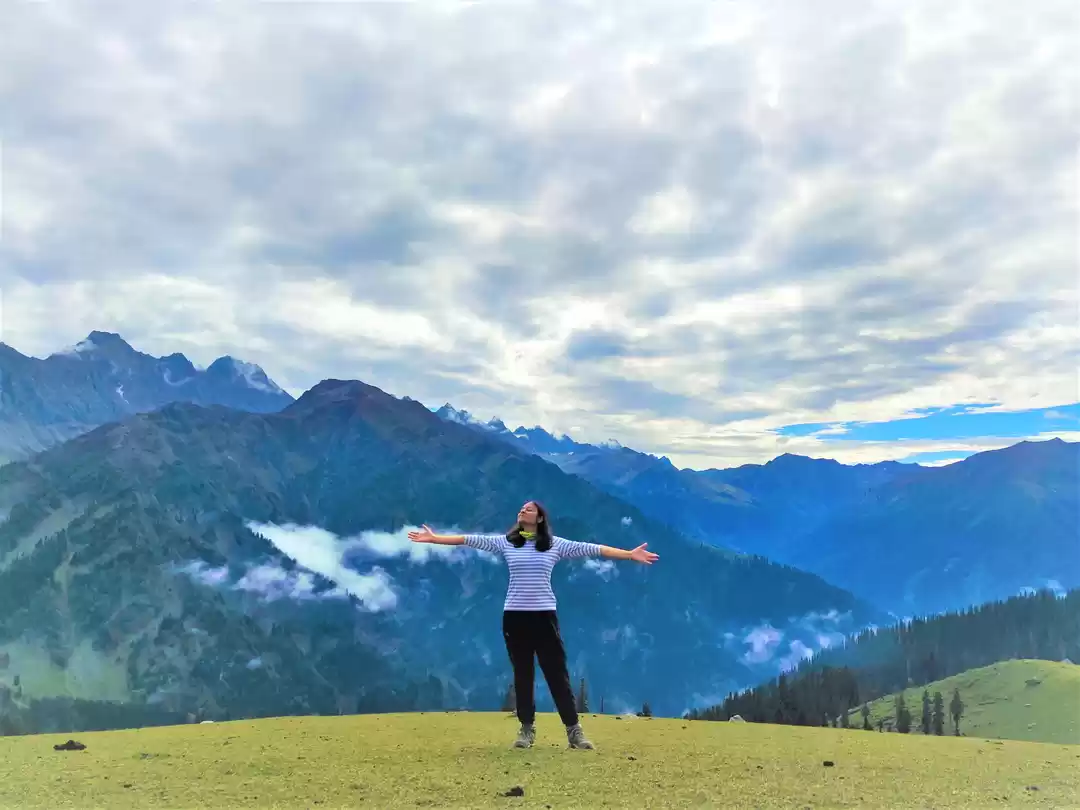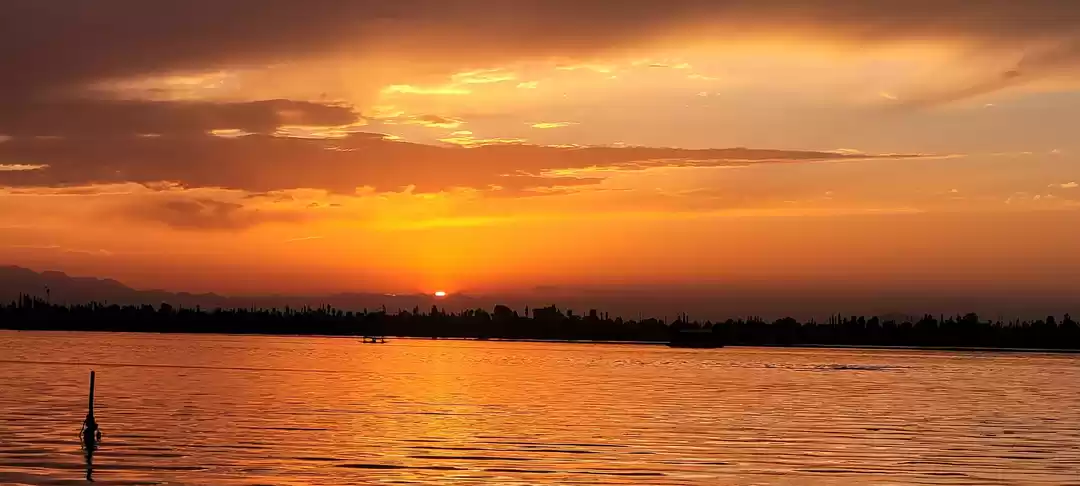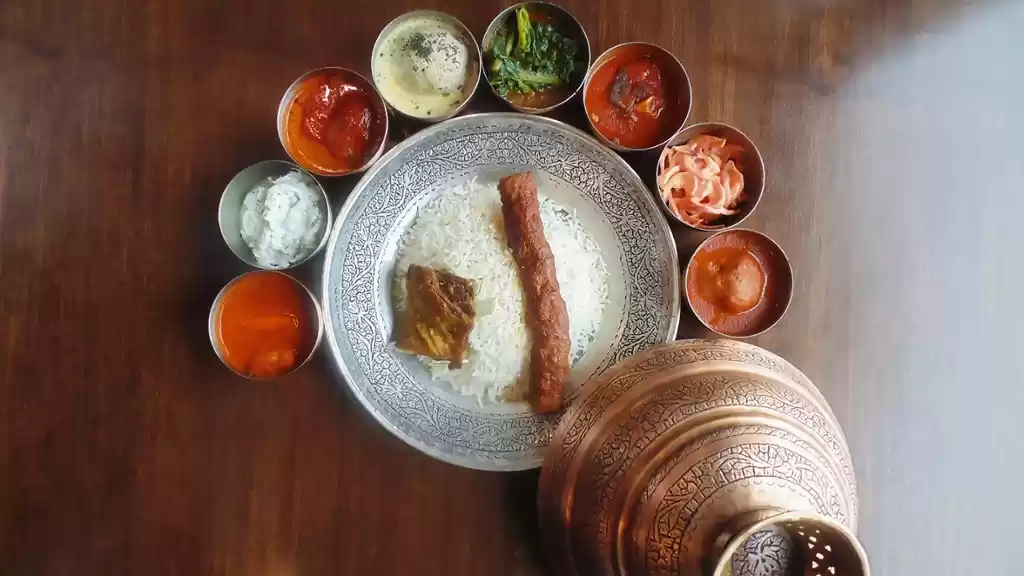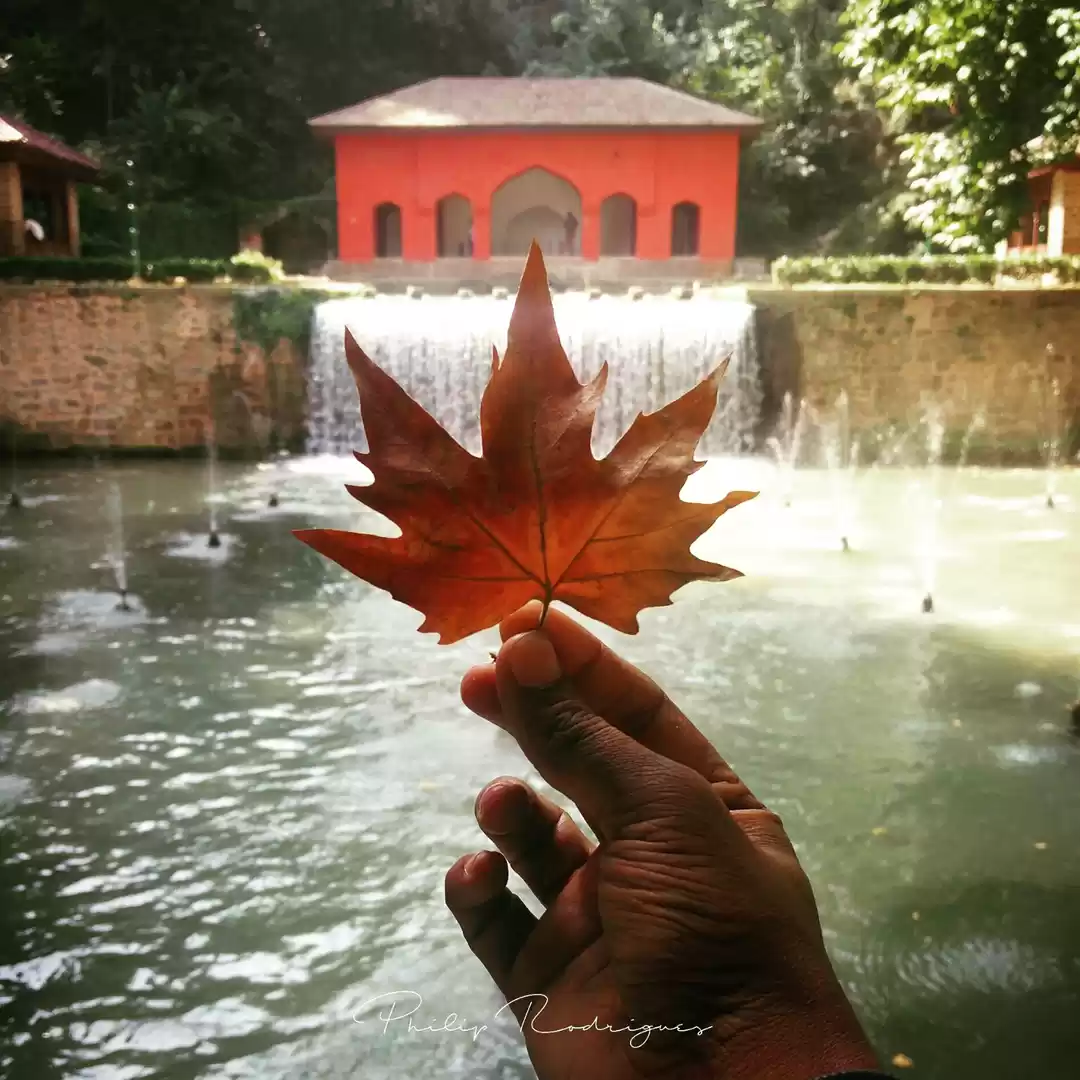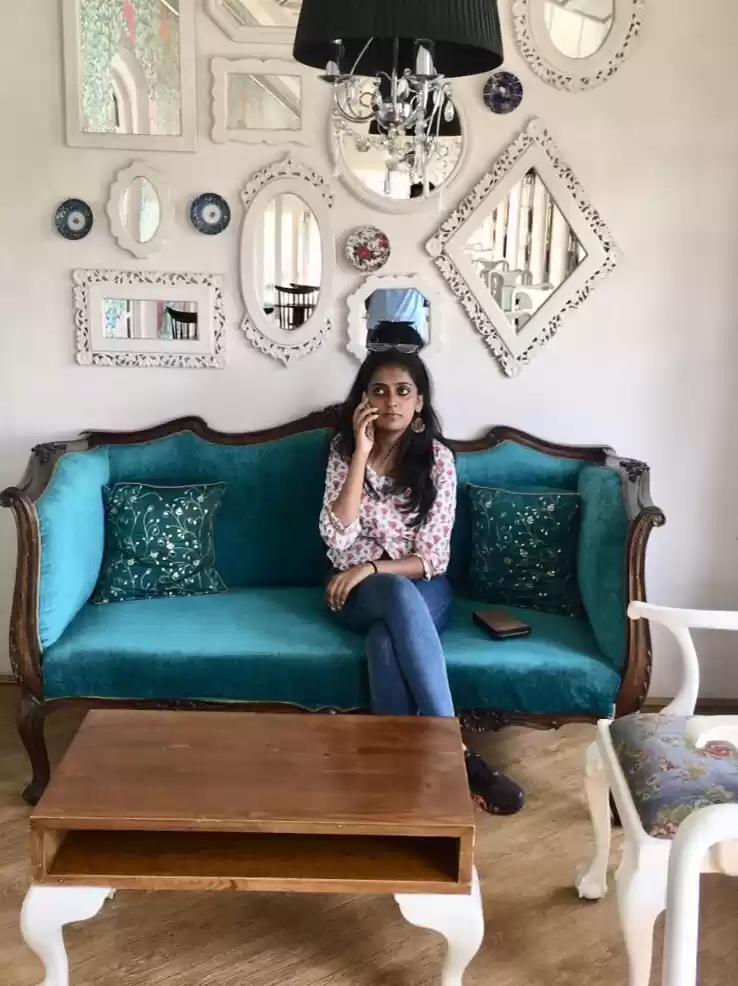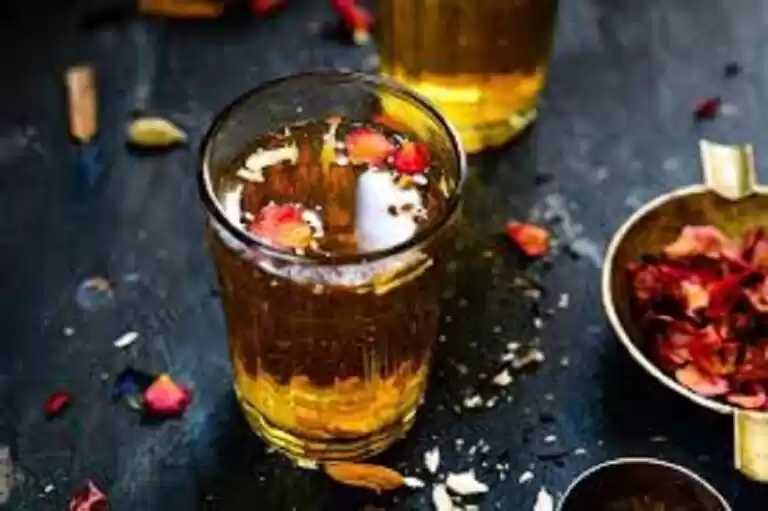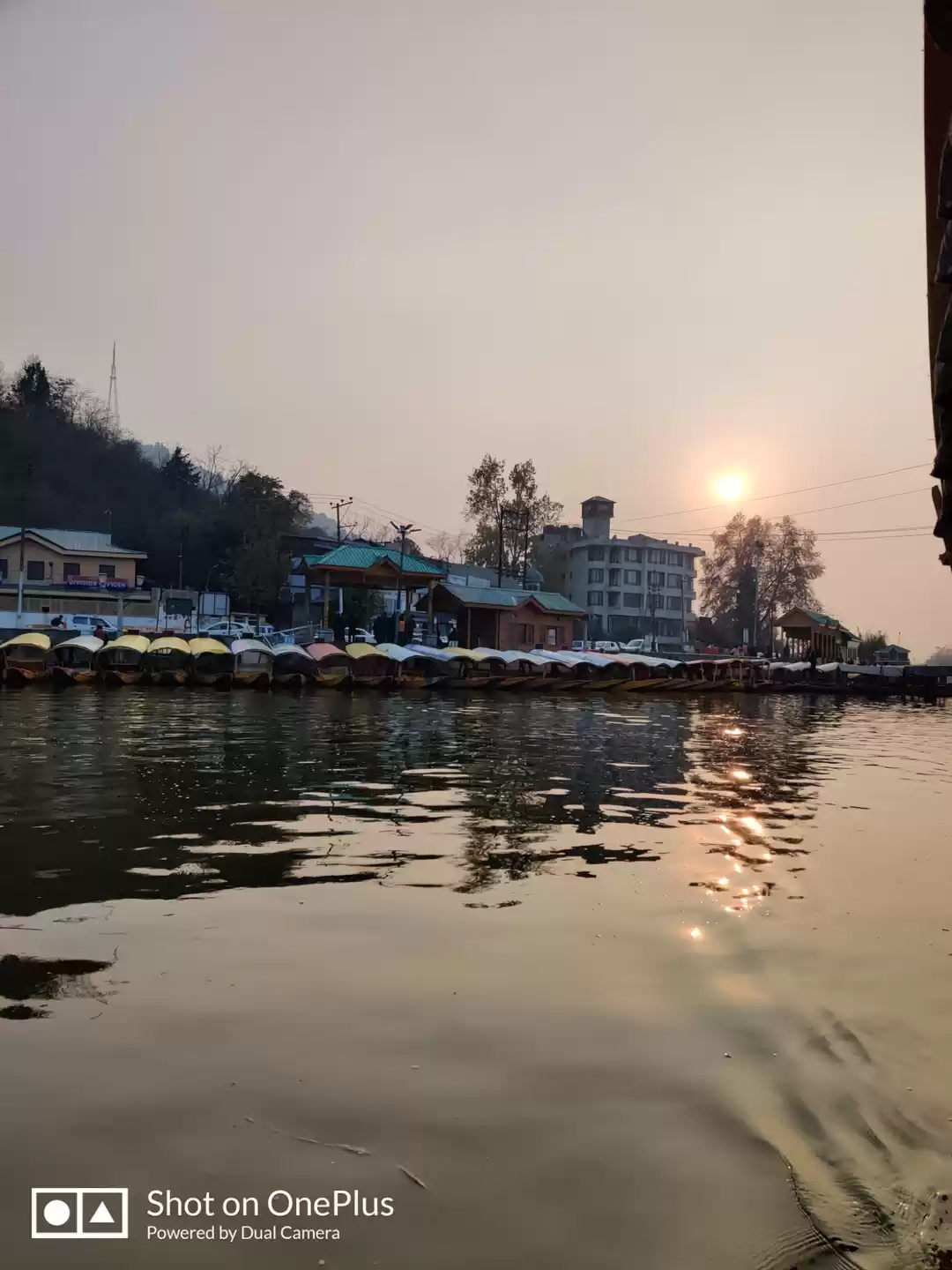The silk route passed through Kashmir, linking central Asia to the west. The route turned into a gateway to the rich Sufi culture, art, handicrafts, and great civilization that eventually descended on the Kashmir valley. Traders and artisans from central Asia settled in and with time their cultural roots permeated into the lives of the Kashmiris. The Kashmir valley is as beautiful as the people of this place and their culture. In hindsight, the culinary also reflects the storied history of Kashmir. Here is a run-through to my culinary walk in Srinagar city—in pictures.
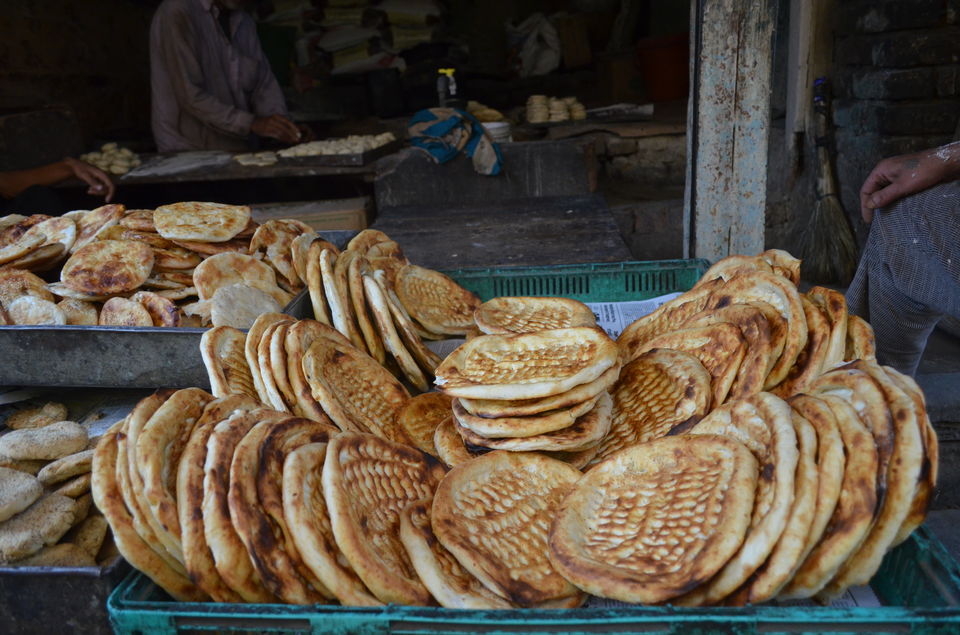
The local bakeries or kandurwans are all over Srinagar’s old city, carrying decades of tradition and recipes handed down through generations. The traditions of bread-making started with their first bakers hailing from central Asia as traders to Kashmir, also part of the silk route. Till date they serve freshly baked bread out of clay tandoors. They bake an array of bread each day.
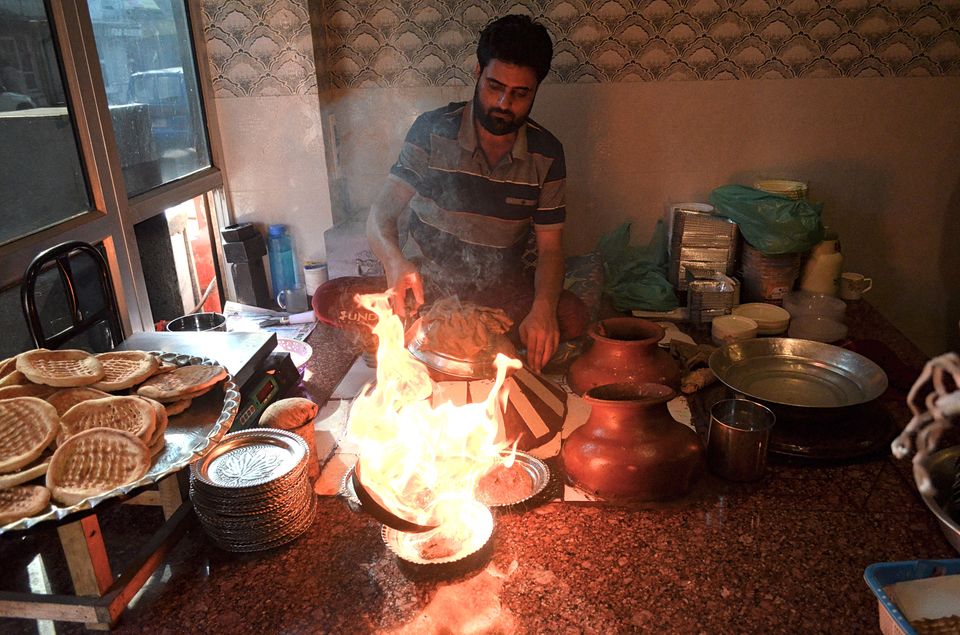
Harissa, a delicious mutton mash, tastes like meat hummus make for Srinagar's tastiest street food. The meat slow-cooked in earthen pots, placed inside wood-fired ovens is deboned and then slowly stirred overnight till it gains a beautiful mash. They garnish with methi maaz, small pieces of kebabs and hot mustard oil which gives out a smoky hint of the fire. Best served with and freshly baked czot.
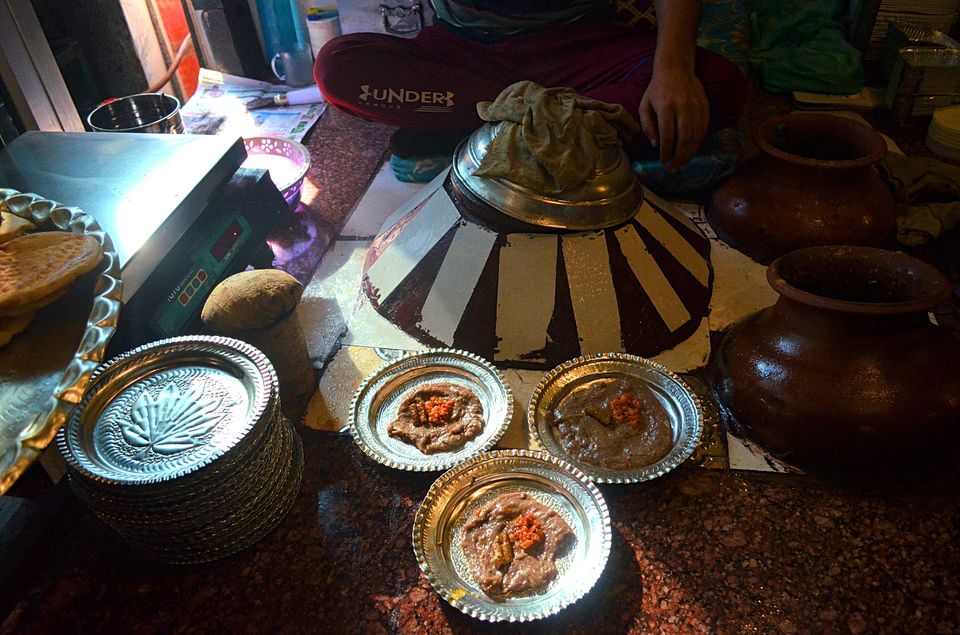
Harissa, has its origin in Central Asia and came to Kashmir during the Mughal era and still holds a special place into the culinary world of Kashmir. Downtown Srinagar or lovingly referred as the old city has some of the oldest, 5th generation harissa making shops.
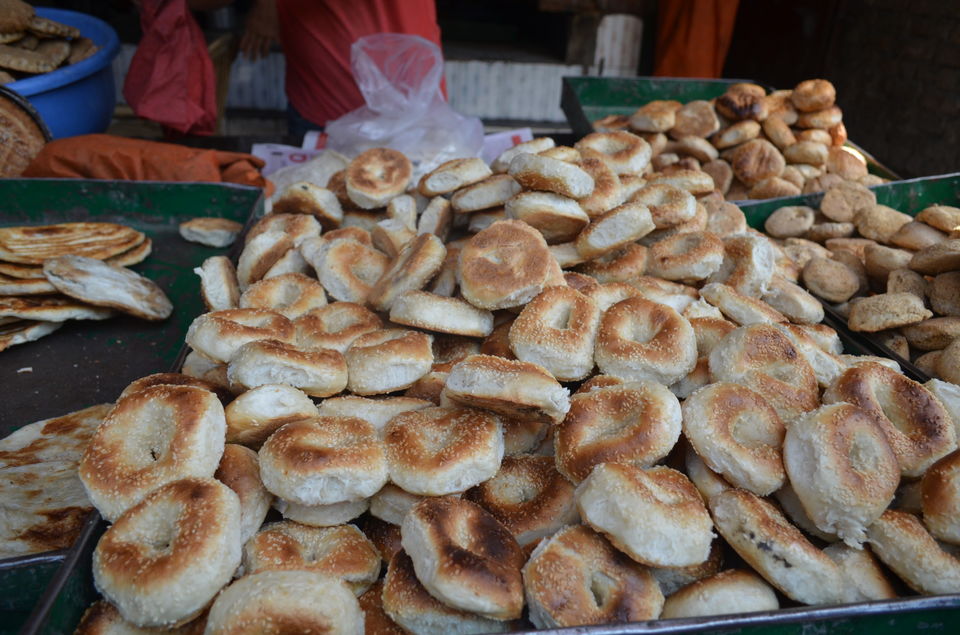
Czochworu is the Kashmiri baked donut. It is a small, soft round bread with a soft upper half sprinkled with til (sesame seeds) or khaskhash (poppy seeds) and the lower crust is crispy. It’s the evening/afternoon bread, best enjoyed dunked in noon chai (special salted tea).
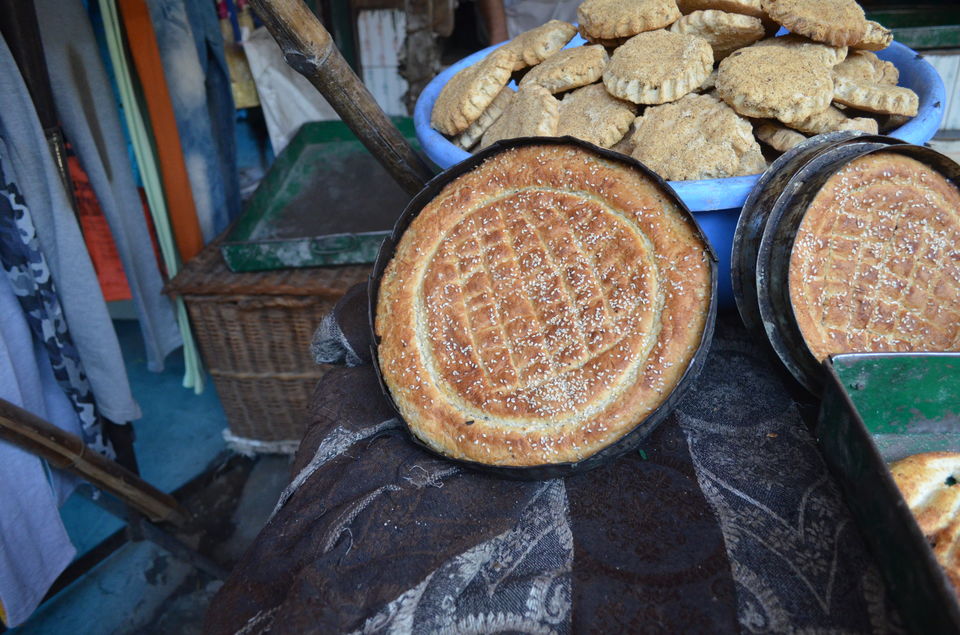
Roth is sweet bread baked with lots of dry fruits. They're prepared during wedding ceremonies and sent out to friends and families to share one's happiness.
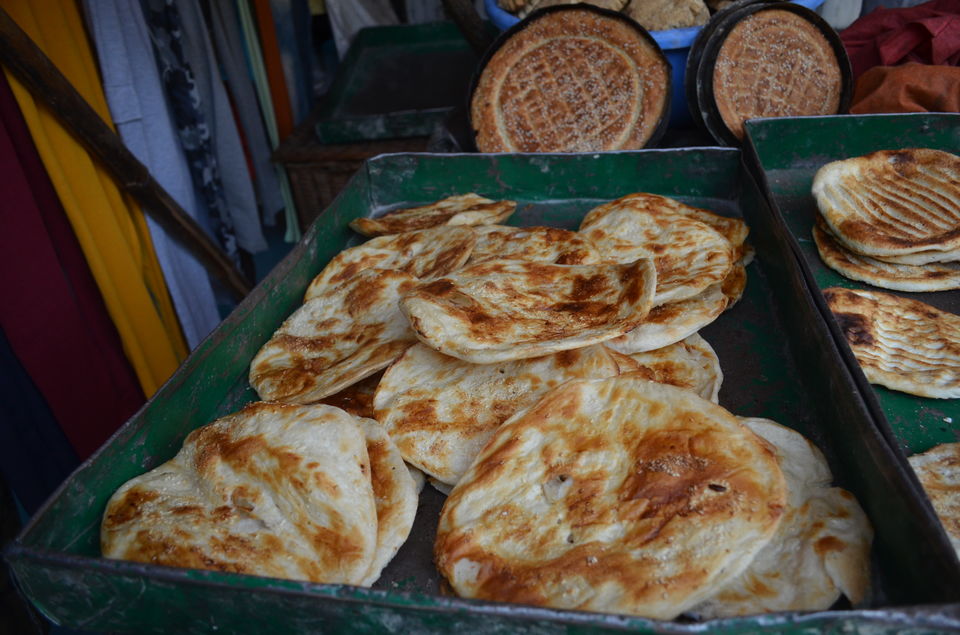
Sheermal is another bread type enjoyed with Kahwa, prepared from flour, ghee, salt, sugar and saffron-enhanced milk and baked perfect brown.
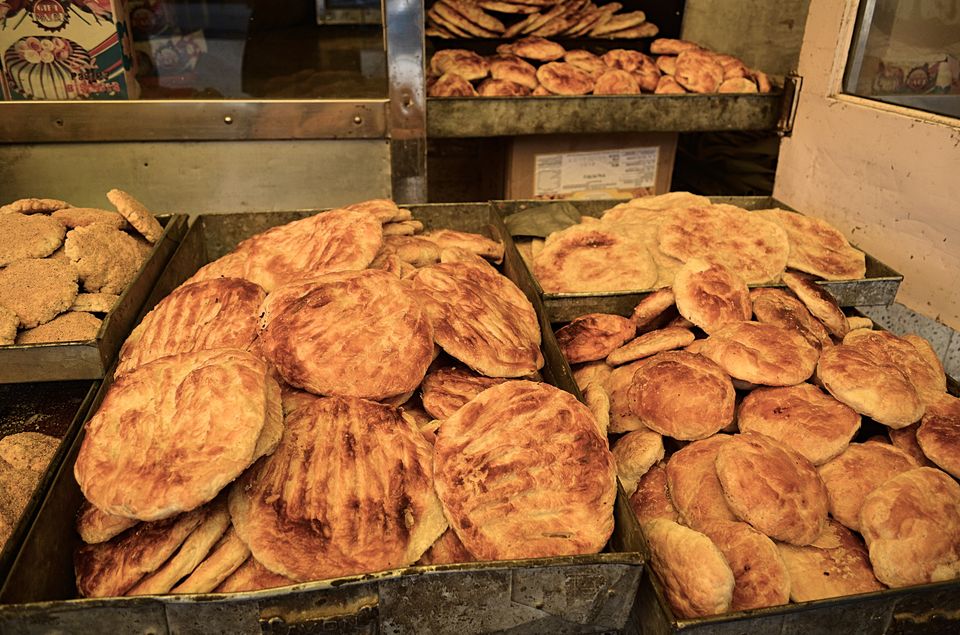
Tandoori Bakarkhani or Katlam is a thick, spiced flat-bread. It looks like naan but lot crispier and layered with sesame seeds. The dough folded in layers comes out much like a puff pastry and paired with the afternoon noon chai.
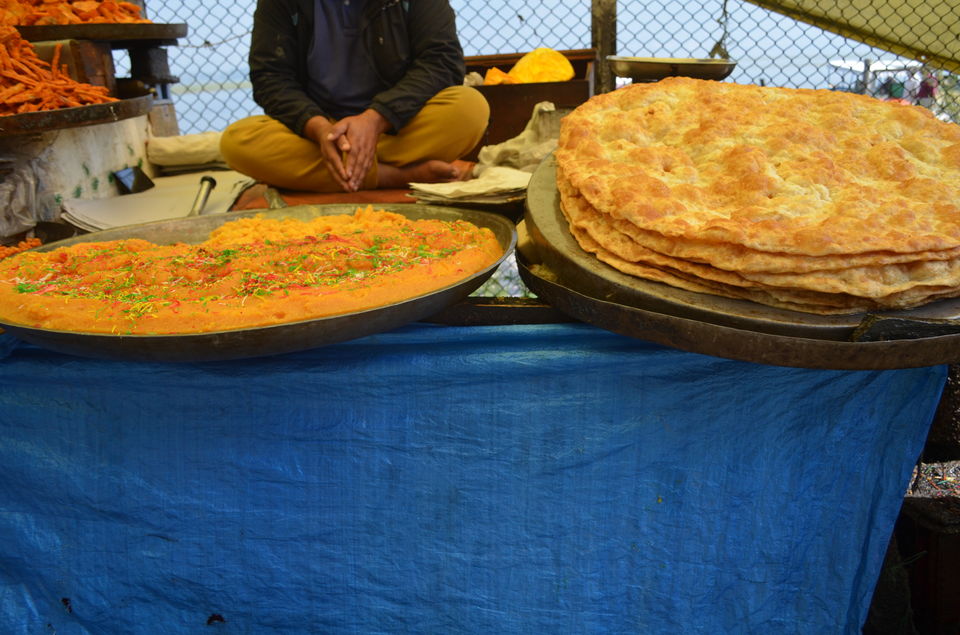
Near Hazratbal shrine in Srinagar, there is an entire array of street food relished by all. The saffron infused halwa and crispy paratha is a must-have.
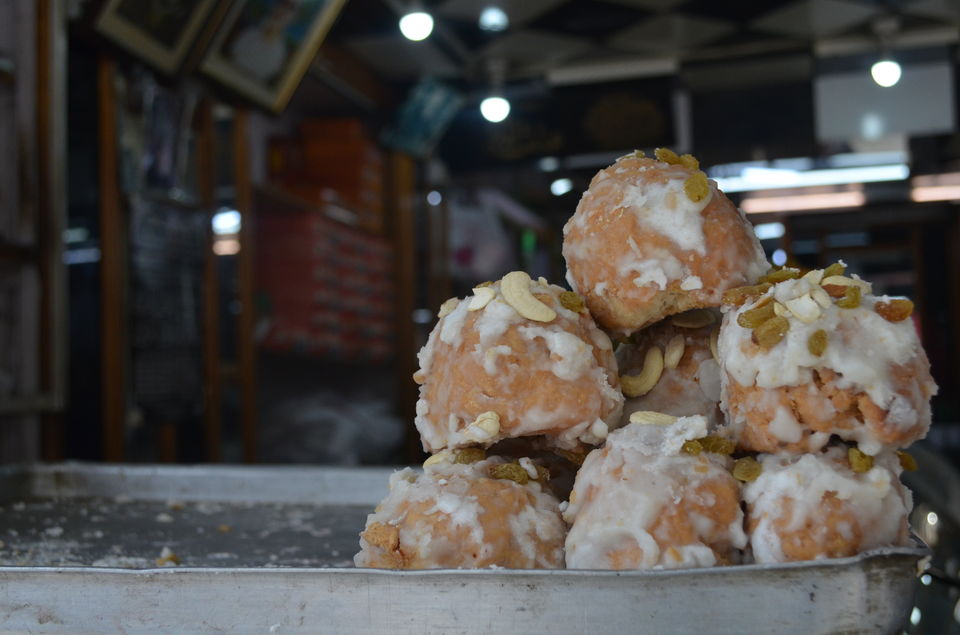
Basrakh is a traditional, melt-in-the-mouth Kashmiri sweet served during special occasions. Made of sugar, maida and ghee, it is an absolute treat if you have a sweet tooth.
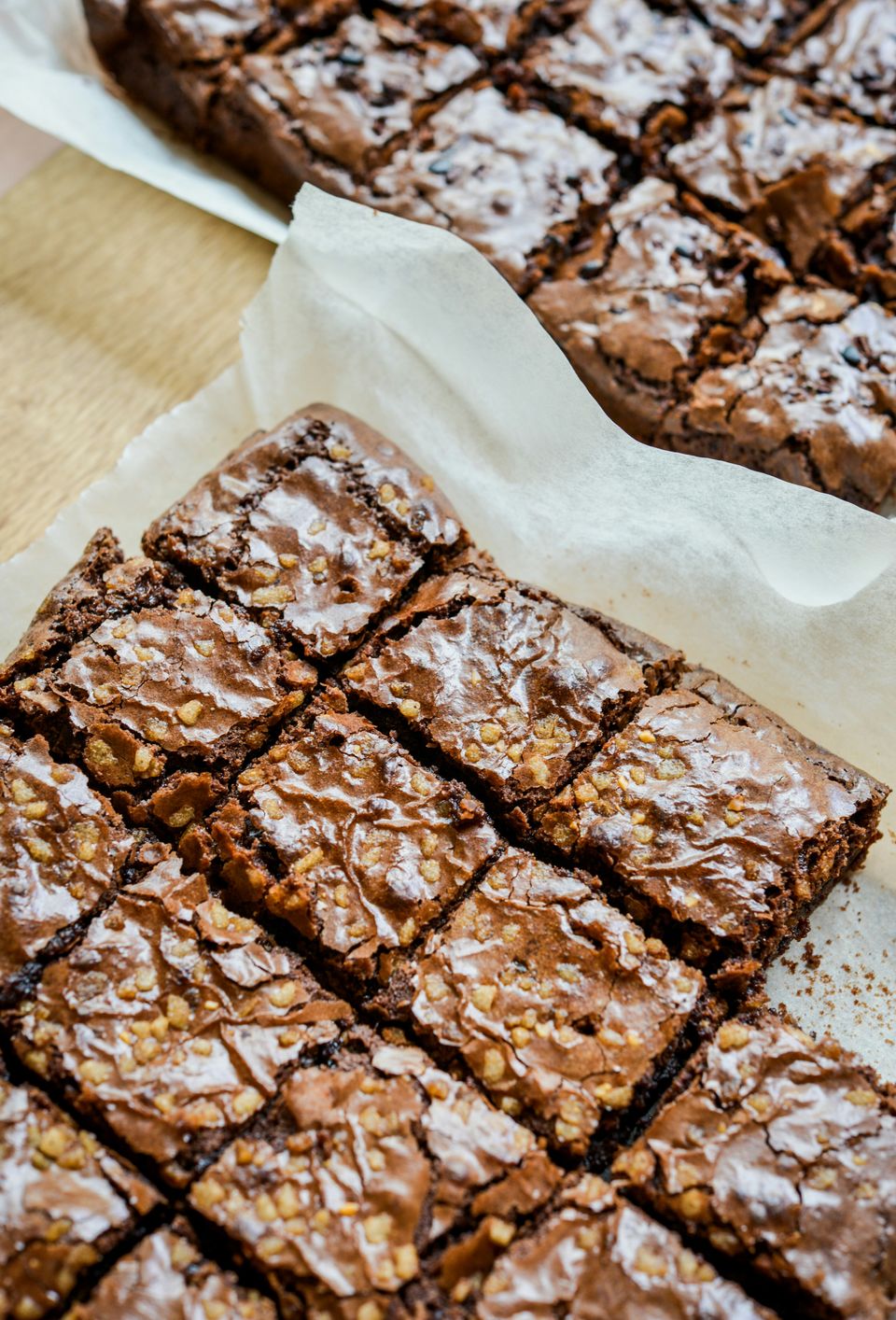
Have you ever tasted a walnut fudge? Srinagar's oldest and best walnut fudge shop, Moon Light at Dargah Hazratbal has been making this delicacy over 100 yrs. Made of dates, walnuts and honey and there's a thin crust adding to the crunch. It's hard to stop eating after just one piece.
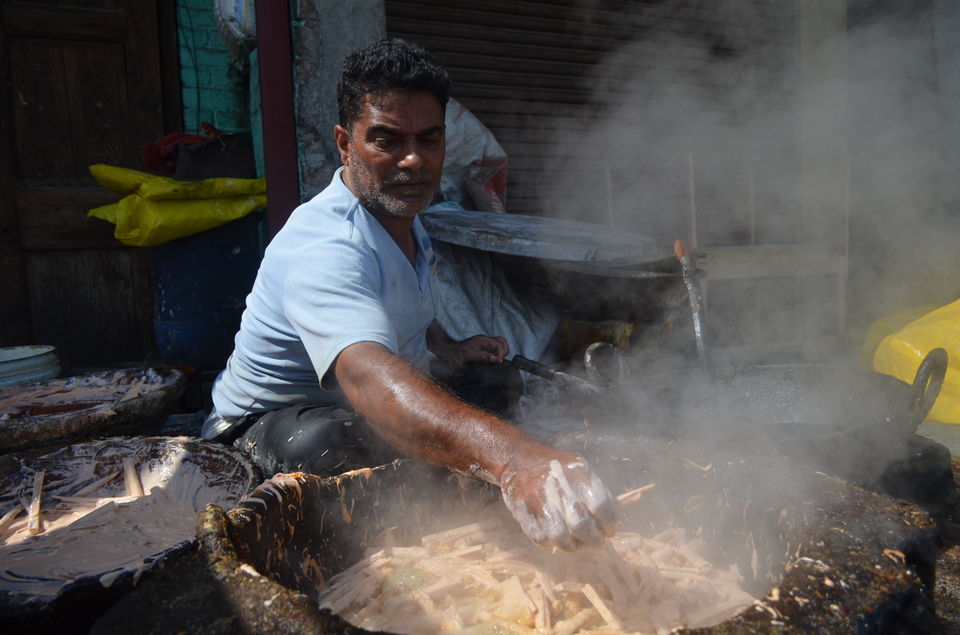
Lotus grows in plenty across the lake waters of Srinagar. Lotus stem, locally called nadru are cooked into curry bowls as they go well with mutton, fish and a host of leafy greens and vegetables. Nadru monje or lotus stem fritters are a popular street food here.
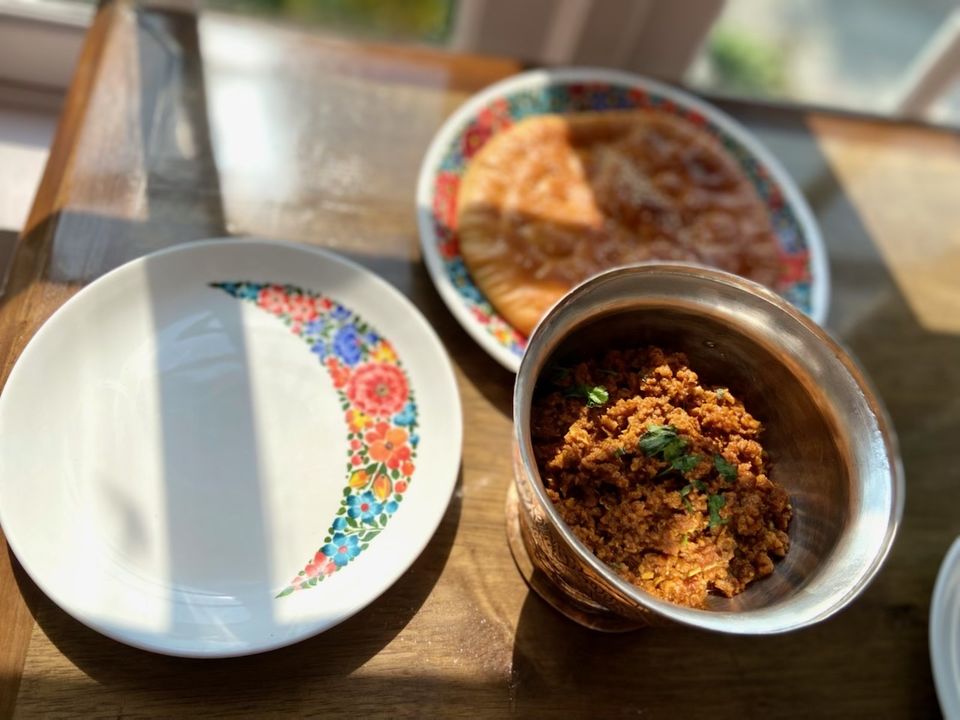
Once you're done exploring the oldest bakeries and eat streets of Srinagar, look for the best cafes in the posh neighbourhoods. Chai Jai is one instagrammable and turned most popular not just for the charming decor but also the food keeps travellers coming. Among others, mutton keema & Uzbek naan are a big hit among foodies.
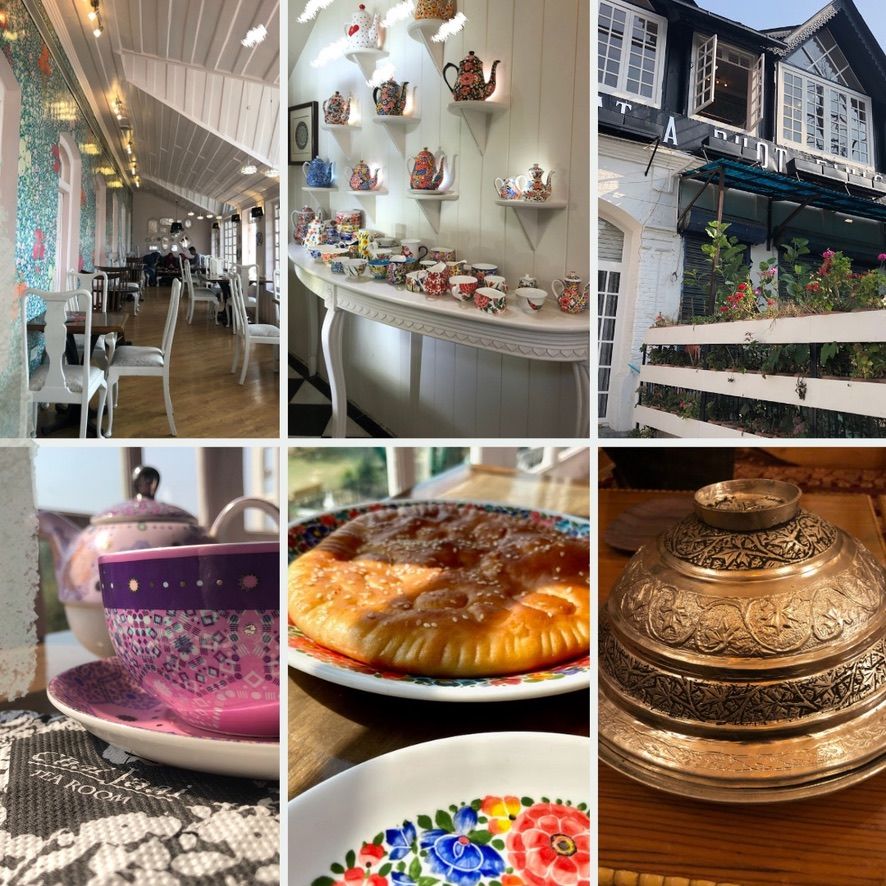
Chai Jaai serves over 60 varieties of tea. Besides the exotic tea collections, their signature kahwa is served the most authentic of ways and that's the first thing to begin with.
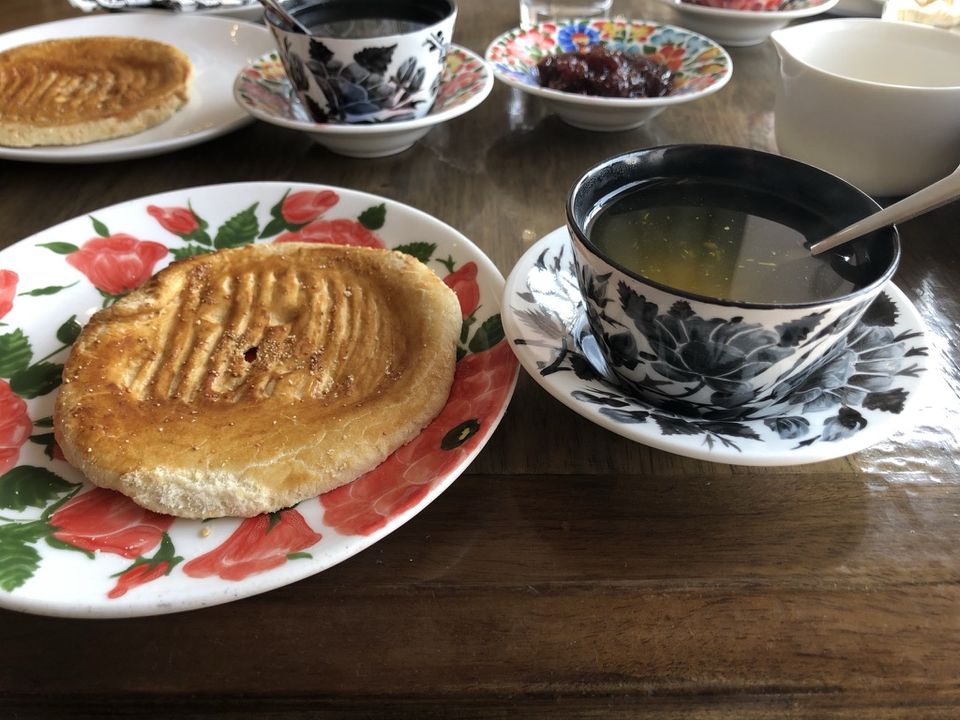
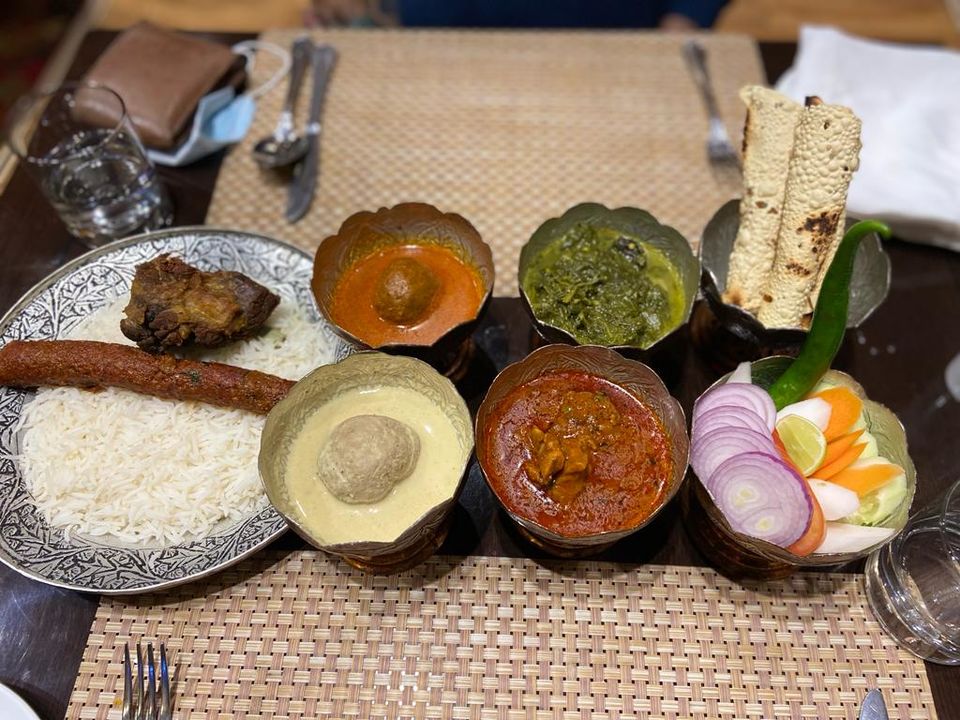
Between fifteen and thirty preparations of meat are cooked overnight under the supervision of vaste waza (master chef) during Kashmiri weddings. The favourite dishes featuring on treami (plate) are seekh kebab, tabakh maaz (lamb ribs cooked with ghee until crisp), haaq (Kashmiri collard leaves cooked in mustard oil and red chillies) rista (Kashmiri kofta doused in a red gravy), rogan josh (tender lamb slow-cooked in Kashmiri spices) and ghustaba (meatballs spiced in aromatic yogurt based gravy). Four person shares each platter and this dinning teaches equality, togetherness, love, sharing, and regard for others. Having wazwan was like taking in the culture on a plate.
Historians claim wazwan travelled Kashmir during the fourteenth century, when Mongol ruler Timur invaded India. He brought with him an entourage of cooks, woodcarvers, weavers, architects, calligraphers from Samarkand. Some settled in the lush valley. The descendants of these cooks, known as Wazas, are the chefs of the Kashmiri feast, the Wazwan.
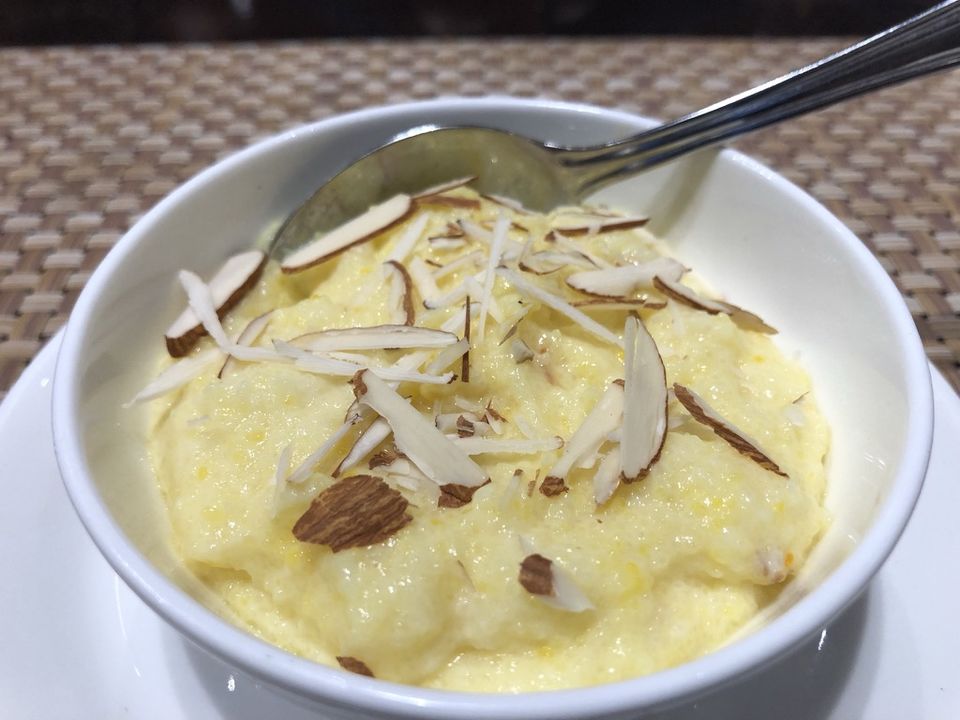
Cap off any Kashmiri meal with their special phirni which is made of semolina instead of rice flour.
Kashmiri walks, a travel company customize culinary tours and take you to feast at the oldest bakeries, iconic shops, and at the 5th generation of wazas' (chefs) family-run eateries. While you admire the landmark architecture and gardens of Srinagar, this immersive culinary tour helps to gain an insight on the Kashmiri cuisine born under the sway of passing kingdoms, sufi saints and migrant traders who called Kashmir home and today a living part of the diaspora.





